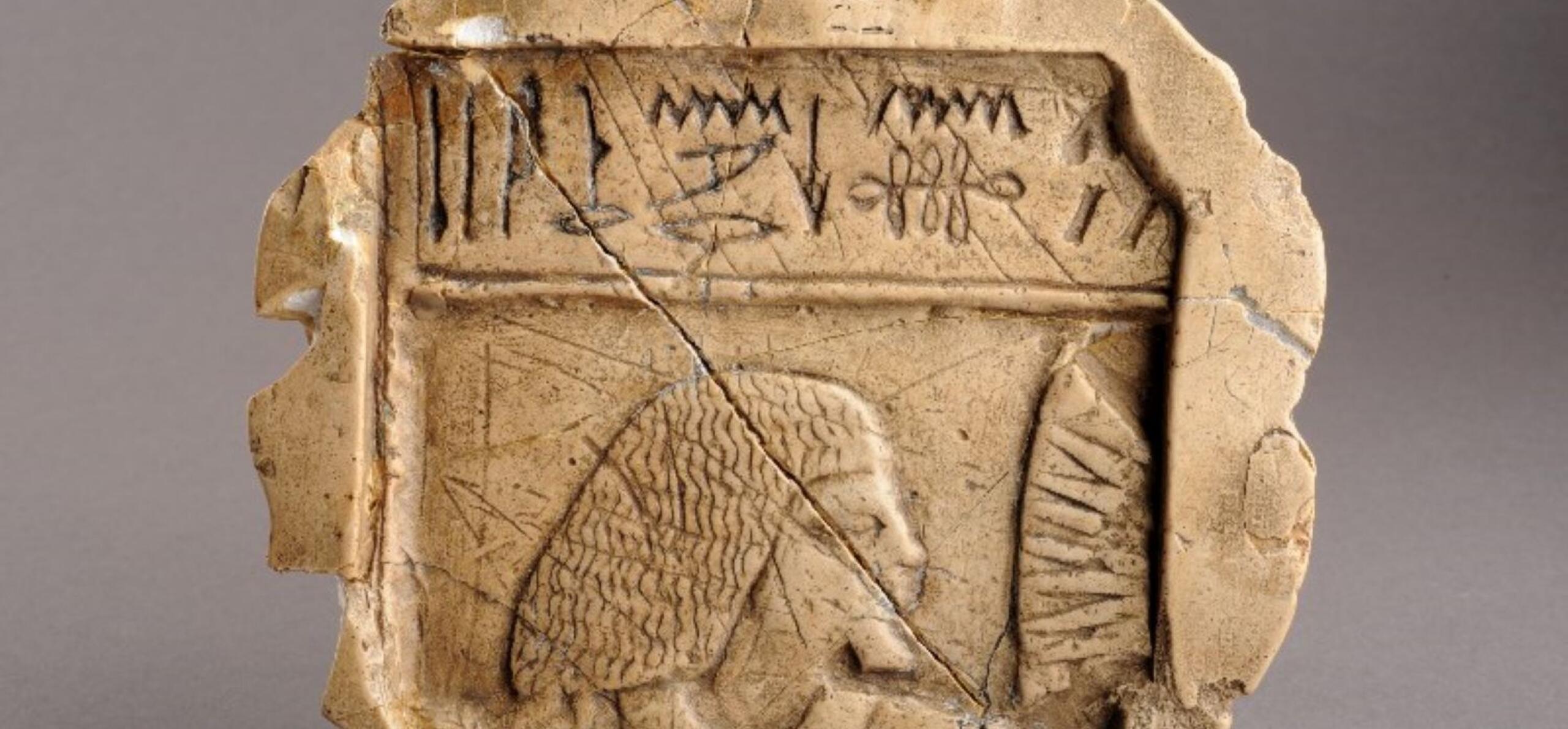We have been offering our loan service to schools around Reading for over 100 years.
We’re back again with another blog in our Loan box curiosities series! This time around we’re looking at box AH44 – Ancient writing.
If you’re interested, you can find the links to the previous blogs from this series at the bottom of the page.
Origins of Writing
Before we look at the objects, lets quickly delve into the origins of writing and written communication. Humans, both modern and archaic have been ‘mark making’, arguably a precursor of writing, for thousands of years. We could say that it all began in the palaeolithic period with the first cave paintings. It is fairly plain to see that early humans used these paintings to record how they saw the world around them, this is why we most commonly see paintings of animals, hunting and human figures.
Cave paintings then developed into proto-writing, the use of symbols or marks to represent words, objects and ideas - which in turn developed into true writing. However, this wasn’t a quick process and interestingly we see writing develop independently across different parts of the world.
Two Cuneiform Tablets
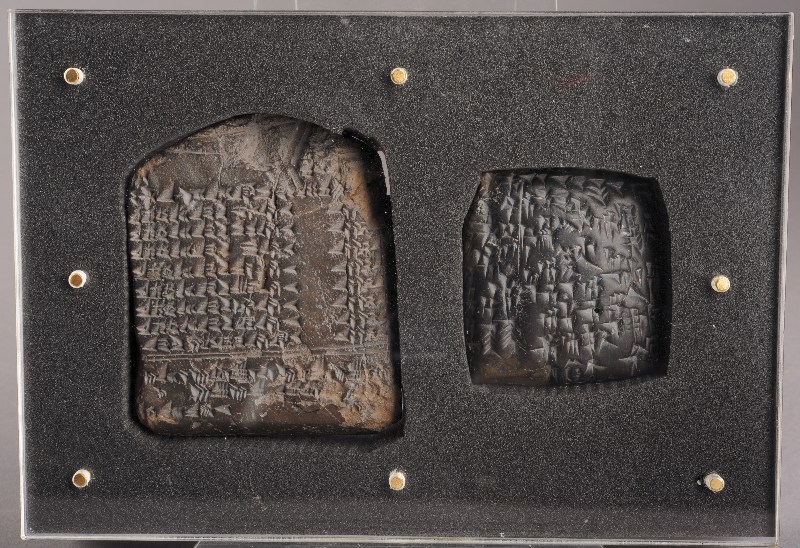
The front of two cuneiform clay tablets (REDMG : 2003.147.1 & REDMG : 2003.147.2)
Here we have two unfired cuneiform clay tablets, both of which show writing on the front and back, though the backs are far more worn. Sadly, as with most surviving cuneiform tablets, these have not been translated, however they roughly date to the Babylonian period (2000 B.C. to 540 B.C).
Cuneiform is one of the world’s earliest known writing systems and was created by the Sumerian civilisation in Ancient Mesopotamia c.3400 BCE. At this point spoken language predated the written form by thousands of years; the need for physical records, such as laws and account only arose as smaller settlements developed into city states. Due to this, Mesopotamia is thought of as the cradle of civilisation as, along with writing, it is also linked with the beginning of urbanisation and agriculture, mathematics and astronomy.
Mesopotamia, if you are unfamiliar, was a historical region in the Middle East, meaning the land between two rivers, the Tigris and the Euphrates. Although mostly consisting of what is now modern Iraq, historically this region also included parts of Iran, Turkey, Syria and Kuwait.
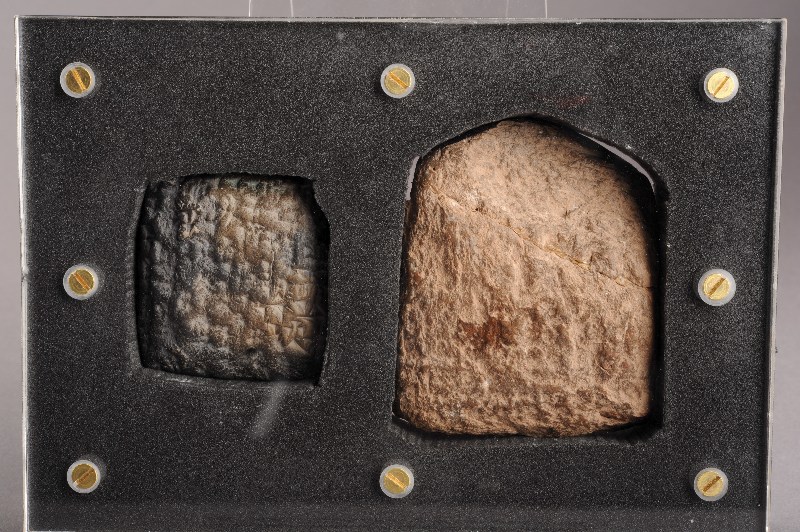
The back of two cuneiform clay tablets (REDMG : 2003.147.1 & REDMG : 2003.147.2)
Cuneiform gradually evolved from of an earlier accounting system that had been in use in the region as early as 8,000 B.C.E, wherein clay tokens were used to record the sale of livestock or other commodities. The clay tokens represented the items being traded and were often impressed onto the surface of round clay containers (Bullae) before being sealed within. This system was gradually replaced with pictographs being written directly onto flat clay tablets.
Over time this then developed into cuneiform proper, a series of wedge-shaped impressions, made by a reed stylus; the name cuneiform, derives from the Latin ‘cuneus’, meaning ‘wedge.
The script was predominantly used for administrative purposes such as business transactions, laws and the like, however we also see written examples of stories and semi-historical events such as the epic of Gilgamesh and the Sumerian king list, or even personal correspondence.
Fun fact - One of the oldest surviving customer complaints was written in cuneiform c.1750 BCE, wherein a man called Nanni was complaining about a delivery of the wrong grade of copper ingots received from the merchant, Ea-nāṣir. In fact, several other cuneiform tablets have been found in what is believed to be Ea-nāṣir’s house, also complaining about bad quality copper or of not receiving their deliveries. Quite hilariously, this has become a well-known, though niche, internet meme.
Cast of an Egyptian Inscription
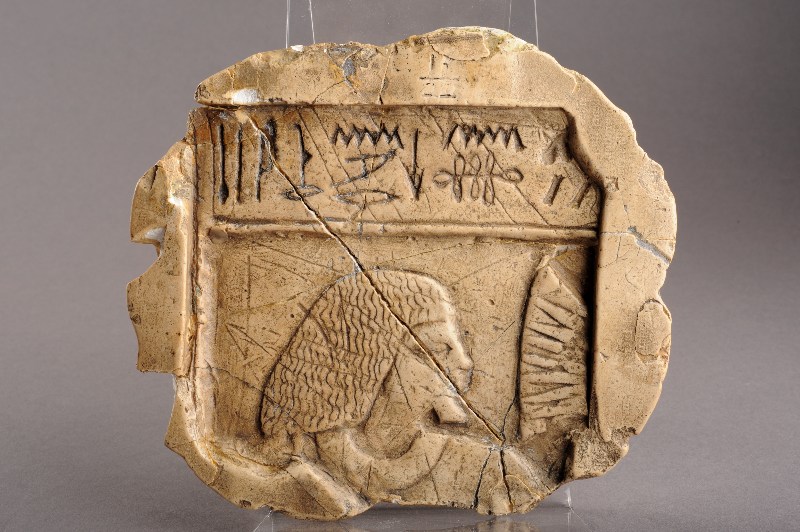
Photo of a cast of an Egyptian inscription (REDMG : 2003.213.1)
This item is a cast of an Egyptian stele, originally found in the tomb of an Egyptian man. In the ancient world a ‘stele’ was a stone or wooden slab usually erected as a monument. These could be used for funerary purposes (as in the case of our object); to commemorate battles; to publish laws and decrees; or as boundary markers. These were often decorated with text, figures or both, and could be carved or painted.
Our cast shows part of an inscription written in hieroglyphics as well as the head and shoulders of the deceased man. He seems to be wearing a false beard, which is often associated with divinity, and a collar of beads; he’s facing the right and in front of him is a lotus flower. This is only part of the original stele, which would have been made from limestone, and was dedicated to a man called Mery-ta.
The name “hieroglyphics”, originates from the Greek for ‘sacred carving’, and was used as a formal writing system by the ancient Egyptians. Hieroglyphics developed around the same time as Cuneiform, but is usually dated to slightly later, c. 3250BC, and was in use until c. 400AD. There is some dispute as to whether hieroglyphics were inspired by cuneiform, or whether it came into existence independently.
Over time literacy among the Egyptian population increased, leading to the creation of simplified forms of the glyphs, resulting in the hieratic (priestly) script c. 3200-3000 BC and later the demotic (popular) script c. 650 BC. However, the ability to read and write in hieroglyphics was lost once Roman Egypt began closing the temples in the 4th – 6th centuries AD. It took until the discovery of the Rosetta Stone, found near the town of Rachid (Rosetta) in the Nile Delta in 1799, for any headway to be made in translating the script.
The Rosetta stone is an ancient Egyptian artifact dating to 196 BC; it shows three translations of the same passage - a decree issued on behalf of King Ptolemy V. One is written in hieroglyphics, one in demotic script, and one in classical Greek. This provided scholars with the key to translate both Egyptian scripts, as they could compare these against the Ancient Greek passage.
Four Roman Coins
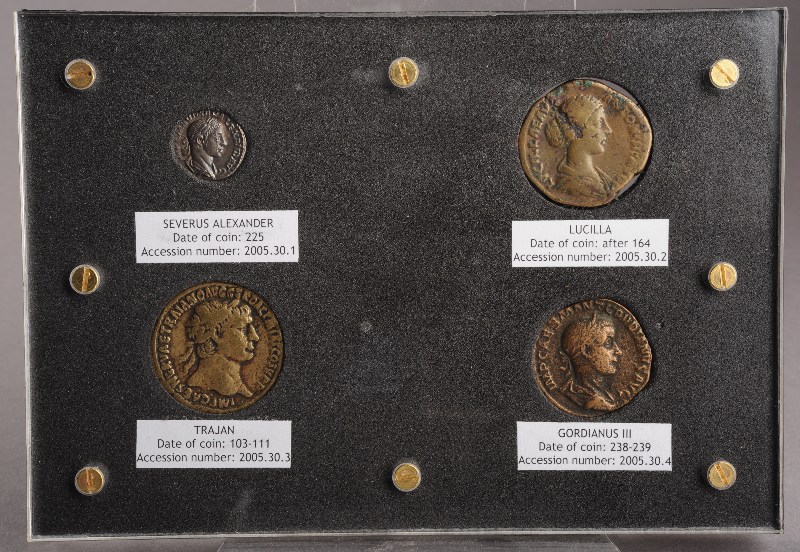
Obverse (heads side) of the four roman coins found in AH44
Finally, we have a collection of four Roman coins. Have a look at the coins shown in figure 4 (from left to right): -
a. This coin is a denarius of Severus Alexander, and dates from 225 AD.
b. This coin is a sestertius of Lucilla, and dates from after 164 AD.
c. This coin is a sestertius of Trajan Roman and dates from between 103 and 111 AD.
d. This coin is a sestertius of Gordian III, and dates from between 138 and 139 AD.
Like our own currency, Roman coins had a ‘heads’ side, the obverse, and a ‘tails’ side, the reverse. Originally the obverse would depict deities or notable individuals, however we eventually see the emperors’ producing coins in their image, a tradition started by Julius Caesar.
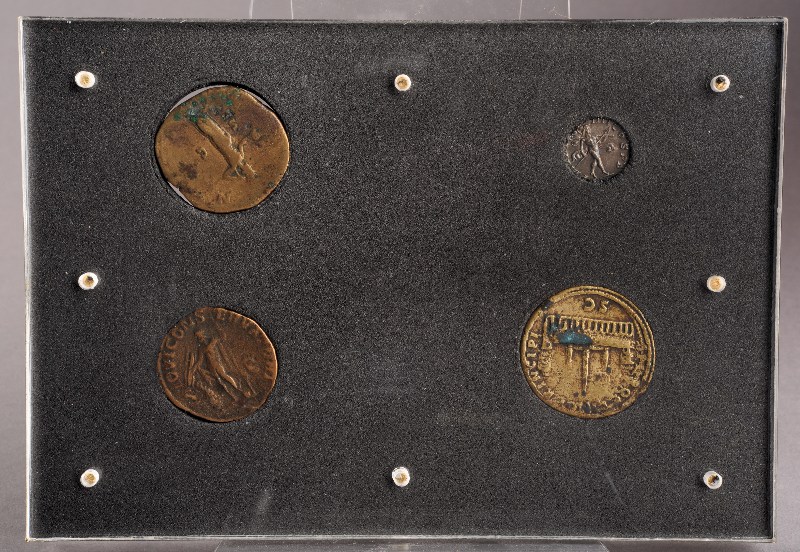
Reverse (tails side) of the four roman coins found in loans box AH44
Looking closer, the writing on these coins (Latin) should look familiar, this is because English (and most modern European languages) uses the Latin alphabet. On the reverse of coins, ‘b’ though to ‘d’, you should be able to make out the legend "SC". This is short for Senatus Consulto "by decree of the Senate”.
As you can see the letters are all capitalised and there aren’t any spaces or punctuation, this is because the Romans didn’t use them, though occasionally we see a dot used to distinguish different words. Most of the letters would be pronounced similarly to English, with some exceptions, for example ‘C’ would have sounded closer to ‘k’ and ‘V’ would have sounded like ‘w’.
Latin has a long history of development, tracing as far back as hieroglyphics. We know that the Romans based Latin on the Etruscan alphabet, which itself was derived from an earlier Greek alphabet that descended from the Phoenician alphabet. In turn, the Phoenician alphabet was the predecessor to the proto-Sinaitic script which evolved from Egyptian hieroglyphic writing. All slightly confusing and far more complex than I’ve made it out to be, but fascinating all the same.
Conclusion
I hope this has helped you to learn something new, as I know I’ve enjoyed discovering more about these objects and maybe this has peaked your own interest to do some researching.
Our loan box service now has over one thousand boxes, covering a vast range of subjects from archaeology to taxidermy. Schools can use real objects to teach, which provides children with tangible and tactile connections to the past.
If you have connections to a school in the Reading area and are interested in taking part in our loans service, please contact us. We’d be delighted to open up the curiosities of the museum to you.
